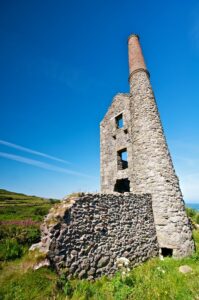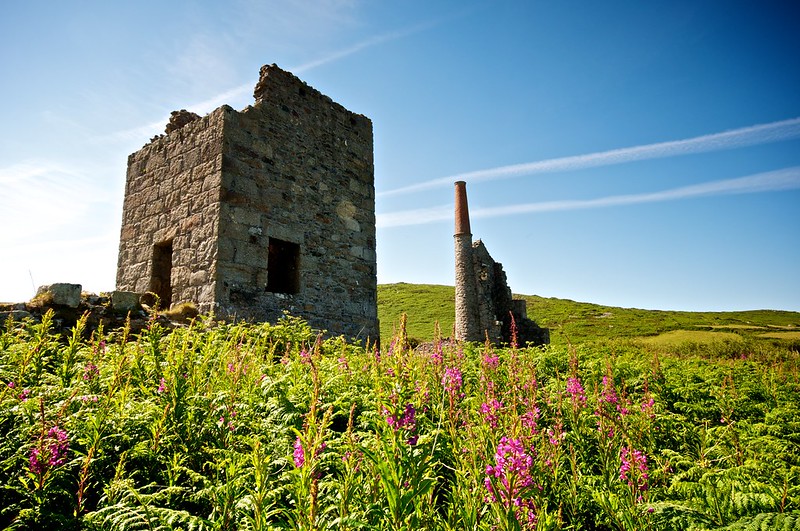By Maria Papagiannopoulou,
Cornwall’s history is rooted in the Paleolithic era, but there were frequent visits from groups of people at that time. Since the end of the last ice age, continuous occupation has started around 10,000 years ago. It had been the common Brittonic language when recorded history began in the first century BC and it would develop into southwest Brittonic, then a Cornish tongue.
Cornwall had belonged to a tribe of Dumnonii, with modern Devon and parts of Somerset included in its territory. Cornwall returned to the rule of independent Romano British leaders after a period of Roman rule and continued to have close relations with Brittany Wales and southern Ireland, neighbours of the Celtic Sea. The remaining areas of Cornwall became contested with neighbouring Wessex following the fall of Dumnonia. Although Cornwall had been ruled by Wessex by the middle of the ninth century, it retained its distinct culture. The English monarchy established the position of Duke of Cornwall in 1337 for the king’s oldest son and heir. The Stannary institutions that gave Cornwall and the neighbouring county of Devon some local control over their main export, tin, were still in place by the time of Henry VIII, but by that point, England had become a more centralised nation under the Tudor dynasty. The Cornish language had drastically declined by the end of the 18th century, and both Cornwall and the rest of England were governed as essential parts of the Kingdom of Great Britain.

In Cornwall, the Industrial Revolution brought a major change and Methodism become popular with the general public, leading to an area which is no longer conformist. The decline of Cornwall’s mining led to the mass emigration abroad and a Cornish diaspora, which was followed by an early Celtic revival in the late 20th century that would lead to the birth of local nationalism. Cornwall’s Early Medieval history, the early Welsh and Breton references to a Cornish King named Arthur, have featured in such legendary works as Geoffrey of Monmouth’s Historia Regum Britanniae, predating the Arthurian legends of the Matter of Britain. The early kings of Wessex are notable for the possible prevalence of Brythonic names among them and therefore care should be exercised in assuming a stark ethnic antipathy between emergent ‘British’ and ‘English’ identities, peoples, and culture; rather a struggle for dominance of warring elites aligned with eastern ‘Germanic’ and western ‘Romano-Celtic’ cultures and peoples.
From the time of the Norman conquest, Atlantic Brythons have often been associated with Scandinavian forces, such as the Danes or the Normans of Brittany. Early in the eighth century, Cornwall was likely a part of Dumnonia, and the Anglo-Saxon Chronicle mentions a battle between Geraint, king of Dumnonia, and Ine, king of Wessex, in 710. According to the Annales Cambriae, the Britons triumphed at the Battle of Hehil “among the Cornishmen” in 722.
It seems to historian Thomas Charles Edwards that Dumnonia fell by 722, and the new kingdom of Cornwall survived for another one hundred fifty years or so thanks to Britain’s victory over Wessex. For the rest of the eighth century, there were occasional battles between Wessex and Cornwall, and in 743 and 753, Cuthred, King of Wessex, fought against the Cornish. In 814, King Egbert of Wessex destroyed “from the east to the west” of Cornwall, and in 825, the Cornish fought the men of Devon, according to the Anglo-Saxon Chronicle. The West Saxons won the Battle of Hingston Down in 838, defeating the Cornish in alliance with the Vikings.
It’s possible that Cornwall’s freedom was lost as a result of this last-known conflict between Wessex and Cornwall. King Dungarth of Cornwall drowned around 875, according to the Annales Cambriae, although Alfred the Great had been permitted to go hunting in Cornwall a decade earlier, indicating that Dungarth was probably an under-king. The fact that Kenstec was the first Cornish bishop to pledge allegiance to the Archbishop of Canterbury and that the bishop of Sherborne was given orders to visit Cornwall every year in order to “root out the errors of the Cornish Church” are further proof that Cornwall began to be ruled by Wessex in the middle of the ninth century. Alfred the Great was able to bequeath properties in Cornwall in the 880s.
Reference
- History of Cornwall (2023),Wikipedia. Available here




